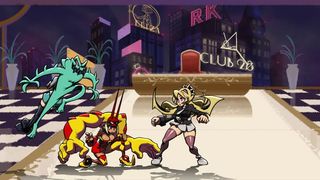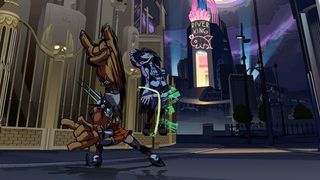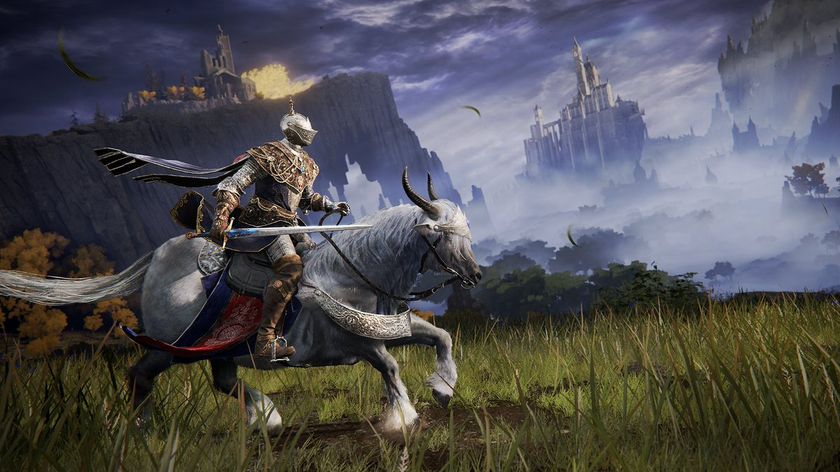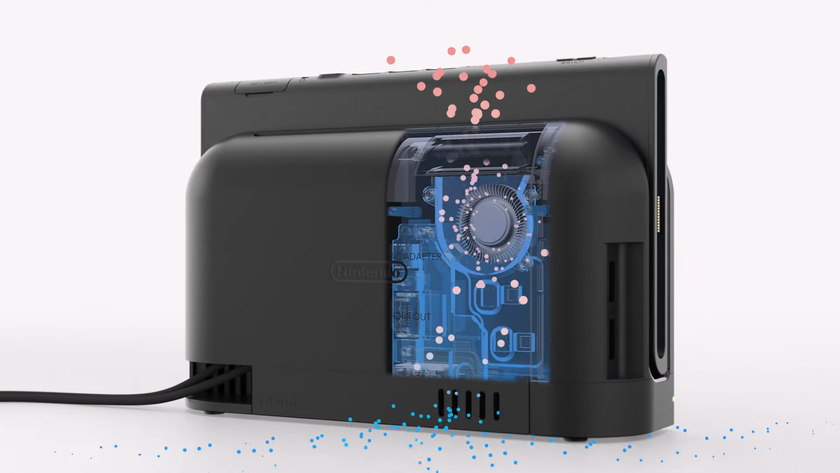Skullgirls hands-on preview
Here comes a new challenger...
Fighting games are a genre that’s been proven very, very difficult to get right. For every game that makes a splash and gets played competitively for years on end, there are many more that fail, often for a variety of reasons: lack of content, poor gameplay balance, inaccessibility, bad competitive play, and what-have you. With that in mind, it’s fair to be wary of a new, as-of-yet unknown fighting game series – which Skullgirls, created by Autumn Games, most certainly is. But after getting a chance to play a very early build of the game, we can say that this is an exceptionally promising title that every genre fan should keep an eye on.
The most immediately striking thing about the game is its unique visual style. Like some fighting games in the past, Skullgirls features an all-female cast. Unlike those aforementioned fighting games, however, Skullgirls is more concerned with making edgy, genuinely unconventional and interesting fighting femmes than simply pandering to fans of specific archetypes.
The two characters we were able to play as, Filia and Cerebella, had bizarre, seemingly parasitic creatures imbedded on their noggins, granting them the powers necessary to perform their various special skills. The actual in-game art and animation is also quite distinct-looking. Unlike the very refined sprites of games like Blazblue, Skullgirls’ art has a sketchy, hand-drawn look to it, full of thick, bold lines and vibrant colors. It’s a standout style that gives the game some serious aesthetic impact.

But all of the awesome art and killer character design in the world wouldn’t amount to much if the gameplay wasn’t up to scratch. Fortunately, even at this very early stage in the game’s development, Skullgirls shows a lot of careful attention paid to elements of combat. The development teams are all veteran players of fighting games, and they’ve carefully devised ways to make Skullgirls into a solid – but approachable – fighting experience.
Skullgirls follows the typical 6-button formula established by Street Fighter. Special attacks follow typical fighting game conventions of semi-circle motions with button combinations. However, the team has made a few distinct changes to the scheme to make the title more approachable. Chain combos of normal attacks are accessible with a simple strong-to-weak button press sequence, and linking normal attacks into special moves for combos is very easy to pull off compared to games like Super SFIV.

“Command normals” have mostly been eliminated, and commands for super skills and special throws have been simplified to simple semi-circle roll commands with a pair of button presses for activation. In fact, button pairs are used quite often to access skills like dashing, calling for partner assistance, and summoning your teammate to take your place.
Oh, did we mention that the game can be played as a tag-team style fighter, ala the Versus series? But there’s a twist: You can also choose to play as a significantly more powerful single character and forgo the benefits of a partner altogether. You’ll lose the ability to perform assists and tag out to recover life, but you’ll also have more vitality and be able to dish out a lot more damage. If you do choose to bring along a buddy, however, you’ll be able to take advantage of a very cool feature: programmable assists! That’s right, you can assign characters to perform whatever skills you want when you call them in for an assist, leading to a great deal of customizability in your fights. The addition of this feature alone will no doubt add a lot of strategy to the pummeling proceedings.
Sign up to the 12DOVE Newsletter
Weekly digests, tales from the communities you love, and more

But doesn’t this feature have the potential to make the game hideously unbalanced, you ask? Well, the developers are quite aware of this, and are carefully fine-tuning the game to ensure a level playing field while still affording the player as many options in their play as possible. One such adjustment we were shown was a brilliantly designed system to discourage the creation and execution of infinite loop combos – the bane of competitive fighting gameplay. These are combos where a player can simply repeat the same set of commands over and over to trap you in an inescapable attack barrage, which becomes more and more annoying as the assault drags out, damage scales down, and you realize the futility of the situation.
To that end, Skullgirls’ game system detects when a player is looping the same set of moves over and over to trap an opponent. After a while, the hit indicators on a character caught in such a loop combo will change to an off-orange color, allowing the victim to tap buttons and perform a quick attack to escape. It’s this sort of creative thinking to common fighting-game foibles that show the level of dedication the Skullgirls crew have to the genre and its craft.

Skullgirls is set to be released on the PS3 and 360 via download this summer. A demo of Skullgirls will be on the show floor at PAX East next week, so if you’re at the event, we highly encourage you to check the game out for yourself.
Mar 7, 2011













